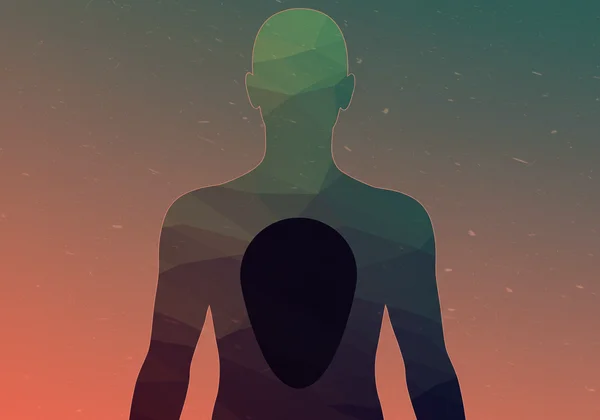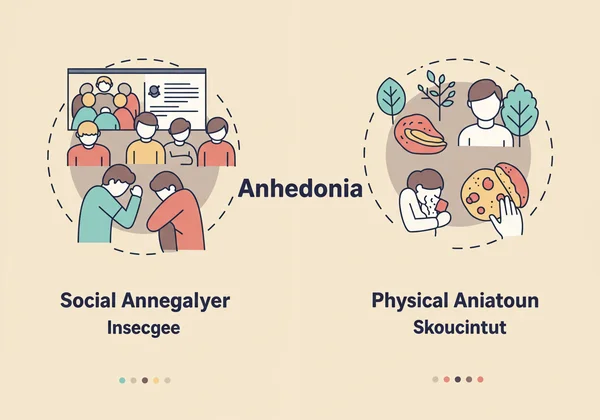Anhedonia Test: Understanding Loss of Pleasure & Numbness
Have you ever felt a profound disconnect from joy, where activities that once sparked pleasure now leave you feeling indifferent or empty? This experience, often described as an emotional void, has a name: Anhedonia. It’s more than just feeling sad; it's a specific inability to experience pleasure. This article delves into what anhedonia truly is, exploring its forms and common misconceptions to help you understand this challenging emotional state. How do you test for anhedonia? Understanding this condition is the first step, and resources like our confidential online assessment can help. If you're feeling a persistent lack of interest or emotional numbness, gaining insight is key to rediscovering your capacity for joy. You can begin your self-discovery journey with a free online assessment right now. start your test

What is Anhedonia? A Scientific Definition
Anhedonia, a term derived from Greek roots meaning "without pleasure," is a core symptom in several mental health conditions, most notably depression. However, it can also manifest independently. It's not simply about not being happy; it's about a diminished capacity to experience pleasure in situations that would typically bring joy. This can involve a wide range of experiences, from enjoying a favorite meal to connecting with loved ones. It's a profound loss of pleasure that can significantly impact one's quality of life.
Beyond Sadness: Core Characteristics of Anhedonia
Unlike typical sadness, which is often a response to specific events and can fluctuate, anhedonia presents as a persistent indifference or an absence of positive feelings. People experiencing anhedonia often report a pervasive emotional numbness, a feeling of being "flat" or "empty." They might engage in activities they once loved, only to find them devoid of any rewarding sensation. Key anhedonia symptoms include a reduced ability to anticipate pleasure (known as "anticipatory anhedonia") and a lack of enjoyment during or after a pleasurable event (known as "consummatory anhedonia"). This isn't laziness or a lack of motivation; it's a genuine neurological shift in how pleasure is processed.
The Spectrum of Pleasure: Motivational vs. Consummatory Anhedonia
To understand anhedonia better, let's look at its two primary facets. Motivational anhedonia refers to a decreased desire or motivation to engage in activities that are usually pleasurable. Someone experiencing this might know conceptually that going out with friends should be fun, but they simply have no drive or interest in doing so. There's a lack of anticipation or wanting. On the other hand, consummatory anhedonia involves the inability to experience pleasure during or after an activity. This person might go out with friends, but feel no enjoyment, no warmth, no joy, even as they participate. Both are significant types of anhedonia and can profoundly affect daily life, leading to isolation and further emotional distress. Understanding these distinctions helps clarify the specific ways in which joy can fade.
Types of Anhedonia: Social and Physical Manifestations
Anhedonia isn't a single, uniform experience; it can manifest in various domains of life. While the core experience is a lack of pleasure, its outward expression often categorizes it into distinct types of anhedonia: social and physical. Spotting these signs can help you identify your challenges and find the right support.

Social Anhedonia: Disconnecting from Relationships and Interaction
Social anhedonia is characterized by a diminished interest or pleasure in social interactions and relationships. Individuals might find themselves withdrawing from friends, family, or social gatherings because they no longer derive joy or fulfillment from these connections. Conversations might feel like a chore, and the presence of others might even become irritating or overwhelming, rather than comforting or stimulating. This form of anhedonia isn't necessarily shyness or introversion; rather, it’s an inability to experience the positive emotions typically associated with human connection. If you've been wondering, what are the symptoms of social anhedonia?, a key sign is a pervasive lack of desire for or enjoyment from social engagement, leading to increasing isolation. Our confidential tool can help you explore your emotional well-being anonymously.
Physical Anhedonia: When Sensory Pleasures Fade
Beyond the social realm, anhedonia can also affect one's ability to experience pleasure from physical sensations. Physical anhedonia refers to a reduced capacity to enjoy bodily sensations that are typically pleasurable. This can include the taste of delicious food, the warmth of a comforting bath, the feeling of a soft blanket, the exhilaration of exercise, or even sexual intimacy. The world might begin to feel dull, muted, or devoid of sensory richness. While physical anhedonia might not be as widely discussed as its social counterpart, it can be equally distressing, leaving individuals feeling detached from their own bodies and the simple joys of everyday life. This often accompanies a general feeling of emotional numbness.
Anhedonia: Distinguishing It from Apathy, Boredom, or Depression
It's easy to mistake anhedonia for other emotional states like apathy, boredom, or even general sadness. However, understanding the key differences is crucial for proper self-assessment and seeking the right kind of support. While these conditions can overlap, anhedonia has distinct characteristics that set it apart.
Key Nuances: Anhedonia vs. Clinical Depression & Apathy
While anhedonia is a hallmark symptom of anhedonia depression, it's important to note that it can also exist independently. Depression typically involves a broader range of symptoms, including persistent sadness, changes in sleep and appetite, feelings of worthlessness, and suicidal thoughts. Anhedonia, on the other hand, specifically targets the pleasure system. Someone might not feel "sad" in the traditional sense, but merely "empty" or unable to feel positive emotions. Similarly, anhedonia differs from apathy, which is a general lack of motivation or interest in activities, not necessarily tied to a lack of pleasure. Apathy might mean you don't care to do something, while anhedonia means you can't enjoy it even if you do it. Understanding these subtle but significant differences is key to identifying the true nature of your emotional experience.
When Emotional Numbness Signals Anhedonia
The pervasive feeling of emotional numbness is a strong indicator that you might be experiencing anhedonia. If you find yourself going through the motions, feeling little to nothing in situations that used to bring happiness, excitement, or satisfaction, these are potential signs of anhedonia. It's not just a passing mood; it's a persistent state where the brain's reward system seems to have gone quiet. This numbness can be confusing and distressing, as it prevents individuals from connecting with their own feelings and the world around them. Recognizing this specific form of emotional void is a critical step. If you resonate with these descriptions, an emotional numbness test could offer initial clarity. For a comprehensive, scientifically-backed anhedonia test, consider taking our online assessment, which uses scales like the SHAPS test to provide insightful results. Take the first step towards understanding your feelings.

Taking the First Step: Understanding & Action
Gaining clarity on what anhedonia is and how it manifests is a powerful initial move toward rediscovering your capacity for joy. Recognizing these anhedonia symptoms in yourself is not a diagnosis, but a vital piece of self-awareness. It empowers you to explore what might be happening within your emotional landscape.
If you've been experiencing a persistent loss of pleasure or emotional numbness, remember that you're not alone, and there are resources available to help you gain clarity. Our platform offers a free, confidential anhedonia test designed to provide instant, insightful results based on scientifically validated scales. It’s an anonymous and accessible way to understand if what you’re experiencing aligns with signs of anhedonia.
This free online assessment provides a clear summary report, and optionally, an AI-driven deep analysis, giving you actionable insights. It serves as a valuable starting point for self-reflection and can be a helpful tool to discuss with a mental health professional if you choose to seek further support. Remember, rediscovering joy is a process, and gaining clarity is a powerful first step. Discover your insights today.
Your Questions About Anhedonia Answered
Navigating feelings of emotional numbness and loss of pleasure can bring up many questions. Here are some common inquiries about anhedonia, answered to provide further clarity and guidance.
How do you test for anhedonia?
Testing for anhedonia typically involves a combination of clinical assessment by a mental health professional and the use of standardized self-report scales. Online tools, such as our anhedonia test, utilize clinically validated questionnaires like the Snaith-Hamilton Pleasure Scale (SHAPS) Learn more about SHAPS to help individuals assess their experiences of pleasure. These tests provide a score and a summary report, offering initial insights into whether you might be experiencing symptoms consistent with anhedonia. It's a convenient and confidential way to begin your self-assessment. Start your journey to gain clarity.
Does anhedonia ever go away?
The persistence of anhedonia varies greatly depending on its underlying causes. If anhedonia is a symptom of another condition, such as anhedonia depression or anxiety, treating that condition often leads to an improvement in the anhedonia. For some, lifestyle changes, therapy (like CBT), and certain medications can significantly alleviate symptoms. While it can be a challenging experience, anhedonia is often manageable and can improve with understanding and appropriate intervention. It’s important to remember that recognizing the problem is crucial for finding solutions and working towards a recovery where you can once again experience pleasure.
Can people with anhedonia cry or laugh?
This is a common misconception. While anhedonia means a reduced capacity to experience positive emotions like joy, it doesn't necessarily mean an inability to express any emotion. People with anhedonia might still cry in response to sadness or laugh in social situations as a learned behavior, even if they don't feel the corresponding emotion intensely or genuinely. The key distinction is the internal experience of pleasure, not necessarily the outward expression of all emotions. They might feel the emotional void, but still exhibit some emotional reactions.
What are the symptoms of social anhedonia?
Social anhedonia is primarily characterized by a lack of interest in or enjoyment from social interactions. Symptoms can include a reduced desire to spend time with friends or family, a feeling of disconnection during conversations, preferring solitude over social engagement, and a general indifference to social praise or criticism. Individuals might find social events draining rather than energizing, and they may struggle to form new relationships or maintain existing ones because the emotional rewards are simply absent. If these sound familiar, an online anhedonia test focused on social aspects can provide valuable initial insights.